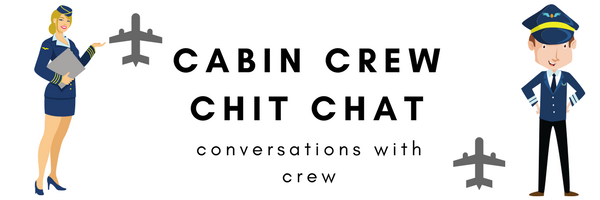
“She said she hates working overnights and she said she doesn’t know if she can do it anymore”
“I was thinking, honey, maybe its time you look for another job or do domestic flights… You’re always going to be doing these back of the clock flights as long as you are flying internationally.”
Red eye flights are a fact of life for most cabin crew, especially those who work internationally. Essentially a red eye means that you leave for duty in the evening and arrive to your destination (home base or slip port) the next morning. As international crew, for my airline, every flight home I operate is a red eye, usually from Asia.
This means that several days a month I lose a nights sleep – which means that I have to catch this up somewhere. Usually landing day is a write off. I’ll sleep most of the day wake up in the mid afternoon for a few hours and then back to sleep by about 8 that evening. Some crew boast that they just stay awake all day, and do sorts of things, but I just don’t know how they power through it after being up almost 36 hours. Again, everyone’s sleep needs are different, but personally sleep and adequate rest are one the most important things to do the job well and feel happy doing it.
Even working domestic I would often do the transcontinental red eyes from the west coast back east at least a couple of times a month. These were pretty easy flights, but they did have their own unique challenges. For me, most of the battle was psyching myself up for the sign on – once I actually started work I was fine, but the hours waiting around the hotel trying to get a nap in before getting ready were sometimes a struggle. The earlier in the evening I start getting ready for work the better since I never normally get much sleep anyway.
Personally I’ve gotten used to them, but just like the chit chat above demonstrates, you better get used to them cause they won’t be going anywhere.
The benefits of Back-of-the-clock
- Passengers are sleepy and much of the time the majority of them are asleep. This means the lights go down and the curtains get closed. Often they are quieter and less demanding flights because people get on and don’t want as much. Compared to a morning however departure, people tend to be in a worse mood by the end of the day.
- You arrive early the next morning, usually before 8am, sometimes as early as 6am. This means you’ve essentially got the whole day off.
- At least at my airline the supper service is more pared back. It’s less demanding on the whole, which is just as well considering you’ve got less energy.
- You get a couple of hours in crew rest, either in a curtained passenger seat or a bunk in the bowels or tail of the plane. What other job do you know where you are getting paid to sleep?
How tired do you get?
Surprisingly its not that bad most of the time and once you actually start work you get a burst of energy – but it does depend on a lot of factors like if you slept well the night before, how demanding your other flights on the trip have been and how many trips you’ve done lately. The worst tiredness comes in the hours between 2-4 like when your body completely slows down. Ask anyone in any job who does graveyard shifts and they’ll say the same: those hours before dawn are the most challenging.
THE RED EYE Medical
If you have any medical incidents on board, chances are it’s going to be on a red eye. People often have been travelling all day from anywhere else across the globe, only to be exhausted, dehydrated, or picked up a bug along the way.
It’s not uncommon to have people fall out of their chair fainting, which can be a bit confronting. Most of the time a good dose of therapeutic oxygen does the trick to restore them back to consciousness. Luckily it’s really mostly just farting in the cabin and bad breath open waking when it comes to people’s bodies. But as people fall asleep and their body is at their lowest ebb in the wee hours of the morning there is the potential for more serious incidents.
It’s the time of night where hospitals record their most number of patients passing after all. Fortunately for everyone I’ve never had someone pass away on board.
That oh-so-lovely wake up breakfast service
Crew rest is a godsend particularly on the red eyes. If you’re on many aircraft you’ll get a bunk where you can lie flat and actually get a decent kip in, but at the very least a seat for a couple of hours. Pretty good. I have to remember what a blessing it is that we actually get this.
If you’re on second break you get woken up just before the breakfast service. That can be a mighty challenge to put your smiley game face on and provide friendly service while you are tired and grumpy and still waking up. I always prefer to be facing the front of the plane on the cart during this service if I’ve been on second break instead of seeing 200 faces looking at me. And then it’s time to prepare the cabin for landing, as the sun rises outside. Before this job I’d never seen so many spectacular sunrises.
“Everyone wants second break.”
“Its so unfair that just because she lives up the coast and further away from the airport she was given second break. We’re all tired”
